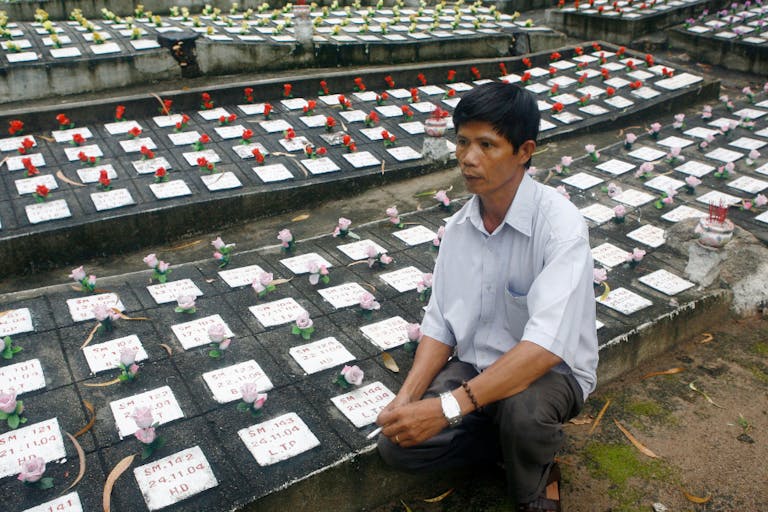
A growing number of Americans call themselves ‘pro-choice’ – but what’s really behind it?
Nancy Flanders
·
Vietnam grapples with an epidemic of sex-selective abortion
The small southeastern nation of Vietnam has had an astronomical abortion rate for the greater part of the 20th century. But the three major factors that influence the high abortion rate in Vietnam – a cultural preference for sons, below replacement rates of fertility, and easy access to abortion – make it an especially lethal place for preborn baby girls.
Abortion in Vietnam has been legal since 1945, and in 1960, the gestational limit was expanded to 22 weeks of pregnancy. In 1971, it was made legal on demand, and after the country’s reunification in 1975, was liberally available all over the country. Now it has the tragic distinction of being the place with the most liberal abortion laws in the world, and the country with among the most abortions in the world per capita. The average Vietnamese woman has 2.5 abortions over the course of her life.
The most recent numbers from the World Population Review show the tiny country of Vietnam has an abortion rate second only to Russia. But even older data sets are horrifying. According to the Guttmacher Institute, nearly 44% of all pregnancies in the country between 2015-2019 ended in abortion, and that doesn’t even include data from private abortion businesses.

Sons carry a weighty societal importance and are expected to care for aging parents and continue the family line, as well as care for deceased ancestors’ souls. According to the pro-abortion United Nations Population Fund (UNFPA), “Couples without sons are often blamed, humiliated, and mocked, being exposed to strong moral pressure from relatives and community members to produce at least one son. This pressure is, many people report, the most painful aspect of sonlessness.”
The result is an anti-female genocide so heinous that whole institutions dedicated to spreading abortion around the world have called for a reverse course. UNFPA’s working paper on the issue has said that “critical reflection on the country’s cultural traditions in the domain of family and childbearing is needed. Furthermore, health providers’ illegal provision of fetal sex determination and sex selection must also be addressed.”
An expected sex-ratio at birth (SRB), or the number of boys born per 100 baby girls born, is somewhere around 104-106. In Vietnam in 2013, it was over 116, but in some provinces it is as high as 120, according to UNFPA. If the gender imbalance trends carry forward into the future, the country’s General Department of Population estimates that by 2034 there will be 1.5 million more males than females.
“Despite gender-selective abortion being illegal in Vietnam, many parents are finding ways to make sure they have boys, who are preferred culturally,” Dr. Khuat Thu Hong of the Institute for Social Development Studies, told the South China Morning Post. “In Vietnam, the reality is that people still have to rely on their sons so that when they get old, they will have someone to take care of them.”
“Many women are forced to get pregnant multiple times to give birth to a boy. Others have to have multiple abortions to achieve that goal,” said Dr. Hong.
Hong also warned there will be far-reaching consequences in the future — issues that have already been seen in other countries with a skewed SRB. “Vietnam will face the problems that China has faced because sons will have trouble finding wives,” Dr. Hong warned. “Vietnam will face more social problems, such as prostitution and trafficking of women.”
In all, Hong decried the horrifically high abortion rate. “Abortion has been normalized, but it is not a normal experience for women. They are still the ones who have to suffer from the physical and mental health consequences.”
Live Action News is pro-life news and commentary from a pro-life perspective.
Contact editor@liveaction.org for questions, corrections, or if you are seeking permission to reprint any Live Action News content.
Guest Articles: To submit a guest article to Live Action News, email editor@liveaction.org with an attached Word document of 800-1000 words. Please also attach any photos relevant to your submission if applicable. If your submission is accepted for publication, you will be notified within three weeks. Guest articles are not compensated (see our Open License Agreement). Thank you for your interest in Live Action News!

Nancy Flanders
·
Politics
Nancy Flanders
·
Politics
Rebecca Oas, Ph.D.
·
Abortion Pill
Angeline Tan
·
International
Bridget Sielicki
·
International
Angeline Tan
·
Human Interest
Laura Nicole
·
Human Interest
Laura Nicole
·
Newsbreak
Laura Nicole
·
Human Interest
Laura Nicole
·
Human Interest
Laura Nicole
·